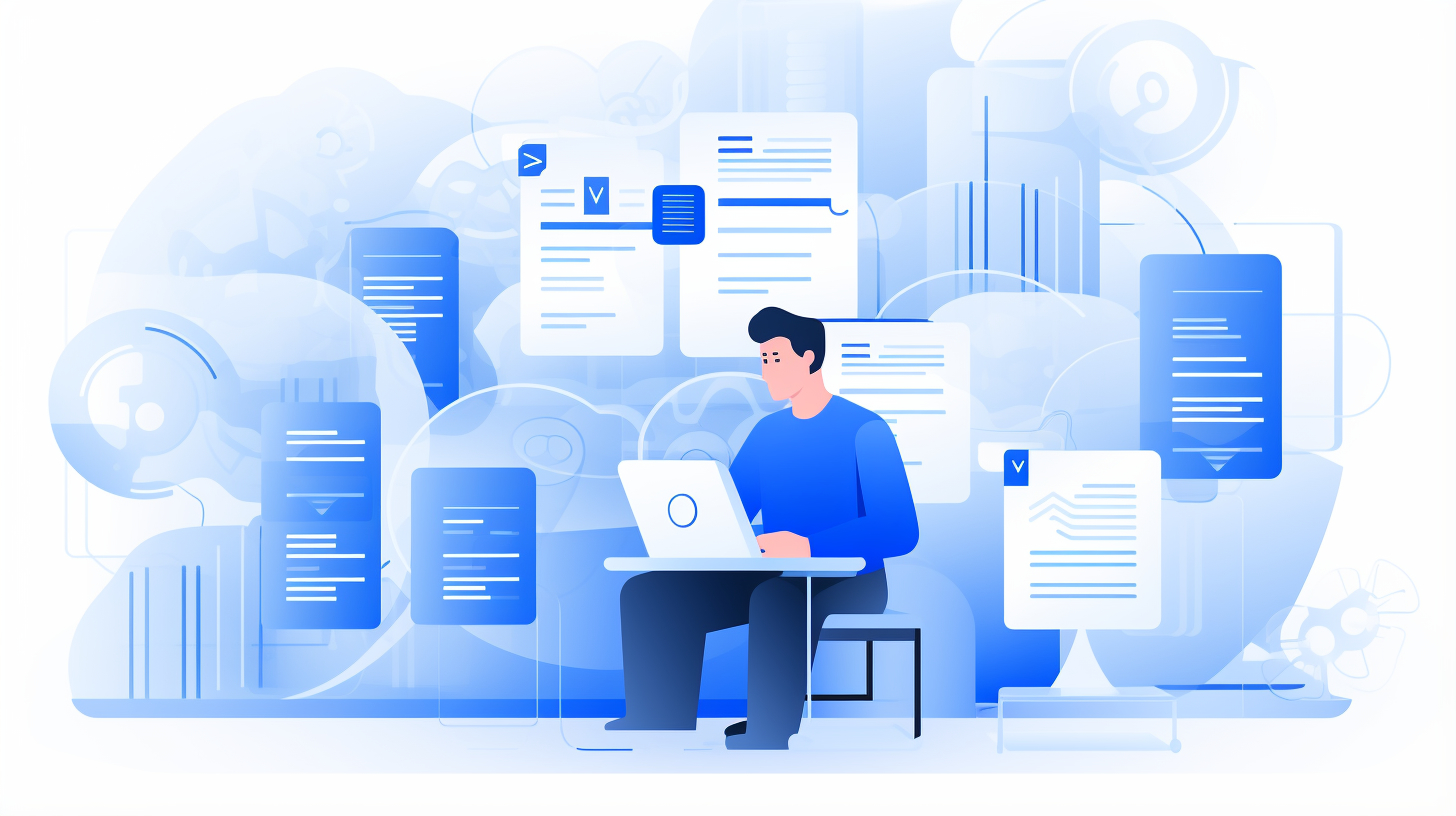歡迎來到令人興奮的 WordPress 速度優化世界!在當今快節奏的線上環境中,用戶擁有看似無窮無盡的選擇,擁有一個快速且響應迅速的網站對於在競爭對手中脫穎而出至關重要。用戶希望網站能夠快速加載,而緩慢的網站加載速度會對您的用戶體驗、搜尋引擎排名以及最終的利潤產生不利影響。
在本文中,我們將揭示頂級 WordPress 速度優化秘訣,幫助您超越競爭對手。從減少外部 HTTP 請求到優化您的託管、資料庫、圖片等,我們將介紹各種可以增強您網站效能的技術和策略。那麼,讓我們深入研究並揭開閃電般快速的 WordPress 網站的秘密!
減少外部 HTTP 請求
單獨託管外部文件
當談到減少外部 HTTP 請求時,一個有效的策略是單獨託管外部檔案。這意味著將 CSS 樣式表、JavaScript 檔案和圖像等檔案儲存與您的網站相同的伺服器上,而不是依賴外部託管服務或 CDN(內容分發網路)。
為什麼單獨託管外部文件很重要?
透過單獨託管文件,您可以最大限度地減少網站發出的外部請求數量,從而顯著提高其效能。這就是為什麼它如此重要:
- 減少 DNS 查找: 您網站上的每個外部資源都需要單獨的 DNS 查找來確定其 IP 位址。透過單獨託管文件,您無需進行多次 DNS 查找,從而縮短網頁的載入時間。
- 單連接: 當外部文件單獨託管時,它們可以從與您網站的 HTML 相同的來源提供服務。這意味著您的網站不需要與外部伺服器建立多個連接,而只需要一個連接,從而加快載入速度。
- 控制緩存: 透過在您自己的伺服器上託管外部文件,您可以更好地控制快取。您可以設定快取過期標頭,使瀏覽器能夠在本機儲存檔案的副本並在後續存取時更快地檢索它們。
- 減少對外部資源的依賴: 依賴外部主機服務或 CDN 意味著您的網站的效能取決於這些服務的可靠性和速度。透過單獨託管文件,您可以更好地控制資源的可用性和效能。
如何單獨託管外部文件?
若要單獨託管外部文件,請依照下列步驟操作:
- 上傳文件到您的伺服器: 將 CSS 樣式表、JavaScript 檔案和圖像傳輸到您的網站的伺服器或託管帳戶。確保將它們組織到專用資料夾中以方便管理。
- 更新檔案路徑: 修改 HTML 程式碼中的 URL 以指向新的文件位置。更新
原始碼腳本和映像的屬性,以及頁面樣式表的屬性。 - 測試並驗證: 進行更改後,請徹底測試您的網站,以確保所有檔案都正確載入。檢查是否有任何斷開的連結或缺少的資源,並進行相應的修復。
- 監控效能: 使用 Google PageSpeed Insights 或 GTmetrix 等工具密切注意您網站的效能指標。監控外部請求的數量和總體載入時間,以單獨衡量託管文件的影響。
請記住,單獨託管外部文件只是減少外部 HTTP 請求和提高網站效能的眾多方法之一。將此策略與其他優化技術結合,以獲得最佳效果。
透過控制外部資源並優化其交付,您可以為訪客創建更快、更有效率的網路體驗。
利用快取外掛程式和內容傳遞網路 (CDN)
在當今快節奏的數位世界中,網站的速度和效能可以決定您的線上形象。載入時間緩慢會導致訪客感到沮喪並增加跳出率,而載入速度快的網站往往在搜尋引擎結果中排名更高,並提供更好的使用者體驗。提高網站速度和效能的一個有效方法是利用快取插件和內容分發網路 (CDN)。
快取插件
快取插件是一種工具,它透過在快取中儲存您的網頁或網站元素的副本來幫助提高網站的載入速度。當訪客造訪您的網站時,快取外掛程式會顯示快取版本,而不是從頭開始產生頁面。這大大減少了伺服器負載並提高了網站的整體速度和效能。
使用快取插件有以下一些好處:
- 載入時間更快:透過提供快取頁面,您的網站將為訪客提供更快的載入速度。這可以降低跳出率並提高參與度。
- 減少伺服器負載:由於快取頁面是提供的而不是動態生成的,因此可以將伺服器的資源分配給其他進程,從而確保即使在高流量期間也能實現更流暢的效能。
- 改進的搜尋引擎優化:像 Google 這樣的搜尋引擎會優先考慮載入速度快的網站。透過使用快取插件,您可以增加在搜尋引擎結果中排名更高的機會,最終為您的網站帶來更多的自然流量。
有幾種流行的快取外掛程式可用於不同的內容管理系統,如 WordPress、Joomla 和 Drupal。一些值得注意的選項包括:
- W3 總緩存:適用於 WordPress 網站的綜合快取插件,提供各種快取方法,包括頁面快取、物件快取和資料庫快取。
- WP火箭:WordPress 的一體化快取插件,提供易於使用的最佳化功能,包括頁面快取、檔案壓縮和映像的延遲載入。
內容傳遞網路 (CDN)
內容傳遞網路 (CDN) 是位於多個地理位置的分散式伺服器網路。當訪客造訪您的網站時,CDN 會從最靠近其位置的伺服器提供靜態資產(例如圖像、CSS 和 JavaScript 檔案)。這減少了延遲並確保了更快的載入時間。
以下是您應該考慮使用 CDN 的原因:
- 全球影響力:透過 CDN,您的網站的靜態內容將分佈在全球多個伺服器上。這可以確保您的內容從距離訪客最近的伺服器傳遞給訪客,無論他們身在何處。結果是,您的國際觀眾的載入時間更快,用戶體驗更好。
- 提高性能:透過縮短網站伺服器和訪客之間的距離,CDN 可以最大限度地縮短內容到達使用者瀏覽器所需的時間。這會縮短載入時間並提高網站效能。
- 可擴展性和可靠性:CDN 旨在處理高流量並提供冗餘。這意味著即使在高峰期,您的網站也可以處理大量訪客,而不會出現效能問題或停機。
一些流行的 CDN 提供者包括:
- 雲耀:一種廣泛使用的 CDN,提供具有基本功能的免費計劃以及具有附加功能的付費計劃,例如高級安全和性能優化。
- 亞馬遜 CloudFront:作為 Amazon Web Services (AWS) 的一部分,CloudFront 是一種可擴展且高度可靠的 CDN,可與其他 AWS 服務無縫整合。
總而言之,利用快取外掛和內容分發網路(CDN)可以顯著提高您網站的速度和效能。透過減少載入時間,您可以增強用戶體驗,提高搜尋引擎排名,並最終為您的網站帶來更多流量。考慮實施這些工具,以確保您的網站在競爭激烈的線上環境中脫穎而出。
優化 WordPress 託管
您是否正在尋找增強您的 WordPress 網站的方法?最有效的方法之一就是優化您的託管環境。透過選擇快速的 WordPress 主機並有效地管理 cron 作業,您可以顯著提高網站的效能和使用者體驗。在本文中,我們將探討優化 WordPress 託管的這兩個重要方面,並為您提供可行的入門技巧。
選擇快速的 WordPress 主機
當談到託管您的 WordPress 網站時,速度至關重要。網站載入緩慢會導致訪客感到沮喪、搜尋引擎排名降低以及轉換率降低。以下是幫助您選擇快速 WordPress 主機的一些關鍵考慮因素:
- 表現:尋找能夠提供卓越效能和正常運作時間保證的託管服務提供者。您希望您的網站能夠快速可靠地加載,以確保您的訪客獲得流暢的瀏覽體驗。
- 伺服器位置:選擇伺服器靠近目標受眾的主機。這可以減少延遲並最大限度地縮短您的網站載入所需的時間,特別是對於遠離伺服器實體位置的訪客。
- 快取:選擇提供內建快取機製或支援流行快取外掛的託管服務提供者。透過儲存頁面的靜態版本並將其提供給訪客(而不是每次都動態生成它們),快取可以顯著提高網站的載入時間。
- 內容傳遞網路 (CDN):考慮使用 CDN 來進一步優化您網站資產的交付。 CDN 是分佈在全球多個位置的伺服器網絡,允許從最靠近每個訪客的伺服器提供您的內容。這可以減少延遲並加快頁面載入時間。
- 可擴展性:確保您的主機服務供應商可以處理流量高峰和不斷增長的需求。尋找可擴展的託管解決方案,例如雲端託管或託管的 WordPress 託管,它們可以輕鬆適應您網站的成長而不影響效能。
透過仔細選擇符合這些標準的快速 WordPress 主機,您可以為優化網站的效能奠定堅實的基礎。
管理 Cron 作業
Cron 作業是在預先定義的時間間隔在背景執行的自動任務。在 WordPress 環境中,cron 作業負責執行各種維護任務,例如檢查更新、發布預定的貼文以及執行資料庫最佳化。有效地管理 cron 作業可以幫助提高您的網站的效能並確保關鍵任務按時執行。以下是一些有效管理 cron 作業的技巧:
- 禁用不必要的 cron 作業:分析您的外掛程式和主題設定以識別任何不必要的 cron 作業。有些外掛程式可能具有頻繁的 cron 任務,但這些任務對於您網站的功能來說並不是必不可少的。停用這些不必要的 cron 作業可以減少伺服器的負載並提高效能。
- 明智地安排 cron 任務:調整cron作業的頻率,以在及時執行和伺服器資源之間取得平衡。例如,可以在流量較少的時段減少檢查更新等任務的安排頻率,以減輕伺服器壓力。
- 限制 cron 作業的同時執行:預設情況下,WordPress 允許多個 cron 作業同時運行。然而,這可能會對您的伺服器資源造成壓力,尤其是在流量高峰期。考慮使用外掛程式或在主題的 functions.php 檔案中加入程式碼來限制並發 cron 作業的數量。
- 卸載 cron 任務:某些任務(例如產生網站地圖或發送新聞通訊)可以轉移到外部服務或專用外掛程式。這有助於減輕伺服器的負載並確保高效執行關鍵任務。
優化 cron 作業的管理可以提高您網站的效能並防止因過多的 cron 活動而導致的資源瓶頸。
現在您已經更了解了選擇快速 WordPress 主機和管理 cron 作業的重要性,您可以採取必要的步驟來優化您的 WordPress 託管環境。透過優先考慮速度和效率,您將為訪客創造更好的用戶體驗並為您的網站的成功奠定基礎。
資料庫優化和清理
歡迎來到資料庫優化和清理的世界!在本節中,我們將探討保持資料庫平穩運作的兩個重要面向:安排定期最佳化和執行清理過程。這些實踐不僅可以提高資料庫的效能,還可以提高應用程式的整體效率。
安排定期優化
優化資料庫就像對其進行一次應得的調整。定期優化可以大大提高資料庫操作的速度和效率。以下是安排定期優化至關重要的幾個關鍵原因:
- 提高查詢效能:透過優化資料庫,您可以確保查詢盡可能有效率地運行。這意味著您的應用程式的回應時間更快、效能更可靠。
- 減少儲存空間:資料庫會隨著時間的推移累積不必要的數據,導致文件體積膨脹。定期優化有助於刪除冗餘資料並釋放寶貴的儲存空間。
- 增強索引利用率:索引對於加快查詢執行起著至關重要的作用。透過資料庫優化,您可以確保正確利用索引,從而加快資料檢索速度。
若要安排定期優化,您可以按照以下步驟操作:
- 根據資料庫的大小和使用模式確定最佳化的最佳頻率。通常,對於大多數資料庫來說,每季或每月的最佳化就足夠了。
- 在非尖峰時段設置維護時段,以最大限度地減少對使用者的影響。
- 在運行任何最佳化過程之前建立資料庫的備份以確保資料完整性。
- 利用專門為資料庫最佳化設計的工具或腳本。這些工具可以分析您的資料庫模式、索引使用情況和查詢效能,以提供最佳化建議。
請記住,最佳化是一個持續的過程,因此每次優化後都要監控資料庫的效能並相應地調整您的計劃。
執行清理過程
就像清理您的實體空間一樣,定期對資料庫進行清理過程有助於保持事物井然有序且順利運行。以下是資料庫清理至關重要的幾個原因:
- 資料完整性:過時或孤立的資料可能會導致資料完整性問題和不一致。清理資料庫可確保只保留有效且相關的資料。
- 減少備份和復原時間:刪除不必要的資料會減少備份的大小,使其更快、更有效率。它還最大限度地減少了資料庫復原操作所需的時間。
- 改善使用者體驗:乾淨且組織良好的資料庫可確保使用者能夠快速且有效率地存取所需的數據,從而改善整體使用者體驗。
為了有效地執行清理過程,請考慮以下步驟:
- 識別並刪除不再需要的過時或冗餘資料。
- 掃描因交易不完整或系統錯誤而遺留的孤立記錄或陳舊資料。
- 透過壓縮表或針對不經常存取的資料實施存檔策略來評估和最佳化儲存需求。
- 定期更新和維護資料字典和文件以追蹤資料庫結構的變化。
透過將定期清理過程納入資料庫維護例程,您可以確保資料庫保持有序且有效率。
請記住,資料庫優化和清理需要持續的努力。保持警惕,監控資料庫的效能,並根據需要進行調整以確保應用程式順利運行。
現在我們了解了安排定期優化和執行清理過程的重要性,讓我們深入了解每個流程並探索最佳實踐以獲得最佳結果。
影像壓縮與優化
在當今的數位世界中,視覺效果起著至關重要的作用,確保您的網站美觀且載入速度快至關重要。實現這一目標的一種方法是透過影像壓縮和優化。透過在不影響圖像品質的情況下減少圖像檔案大小,您可以提高網站的效能並提供更好的使用者體驗。在本文中,我們將探討壓縮和優化影像的重要性,以及實現這一目標的一些有效方法。
壓縮影像
說到影像壓縮,目標是在不犧牲視覺品質的情況下減少檔案大小。這不僅有助於提高網站的載入速度,還可以減少頻寬使用。以下是一些有效壓縮影像的方法:
- 使用影像編輯軟體:Adobe Photoshop 或 GIMP 等工具可讓您手動調整影像的壓縮設定。您可以嘗試不同的壓縮等級和格式,以找到檔案大小和視覺品質之間的適當平衡。
- 線上圖像壓縮工具:有幾種線上工具可以自動壓縮您的映像,而無需安裝任何軟體。 TinyPNG、JPEG Optimizer 或 Squoosh 等網站提供了易於使用的介面,只需點擊幾下即可壓縮您的圖片。
- WordPress 外掛:如果您在網站上使用 WordPress,那麼還有各種外掛程式可幫助簡化圖片壓縮過程。 WP Smush、Optimole 或 ShortPixel 等外掛程式會在您上傳圖片時自動最佳化,確保圖片無需任何人工幹預就能正確壓縮。
優化影像
壓縮可以減小檔案大小,而影像最佳化則著重於改善解析度、格式和元資料等其他方面。透過優化圖像,您可以進一步增強其性能並使其更適合 SEO。以下是一些有效優化影像的技巧:
- 選擇正確的影像格式:不同的影像格式,例如 JPEG、PNG 和 GIF,都有各自的優點和缺點。 JPEG 最適合具有多種顏色的複雜影像,而 PNG 則非常適合具有透明度的圖形和影像。 GIF 最常用於簡單動畫。為每個影像選擇正確的格式可以顯著減小檔案大小。
- 調整圖像大小:通常,圖像以原始大小上傳到網站,這會導致圖像加載緩慢。透過將圖像調整為所需尺寸,您可以減少檔案大小和載入時間。您可以使用 Adobe Photoshop 等工具或 Canva 等線上服務輕鬆調整影像大小。
- 優化圖像元資料:圖像元資料包括標題、替代文字和標題等資訊。使用相關關鍵字優化這些元數據可以幫助改善您網站的 SEO。此外,為您的圖像提供適當的替代文字可增強視障用戶和搜尋引擎爬蟲的可訪問性。
使用影像優化插件
如果您使用像 WordPress 這樣的內容管理系統 (CMS),那麼利用圖片優化外掛程式可以簡化壓縮和優化圖片的過程。這些外掛程式會自動處理圖像壓縮並提供附加功能來增強您網站的效能。以下是一些流行的圖像優化插件:
- 斯馬什:此外掛程式會在您上傳圖片時自動優化您現有的圖片,還可以壓縮和優化您現有的圖片。它提供批量優化功能來優化整個媒體庫並支援不同的圖像格式。
- 奧普托莫爾:Optimole 是一款全面的圖像優化插件,可確保以最有效的格式和品質向每個用戶提供圖像。它還使用延遲載入並提供全域 CDN 以更快地傳送影像。
- 短像素:ShortPixel 是一個強大的圖像優化插件,它使用先進的演算法來壓縮您的圖像而不影響品質。它支援各種圖像格式,並提供批量優化和 EXIF 資料刪除的選項。
透過使用這些圖像優化插件,您可以簡化壓縮和優化圖像的過程,即使您不熟悉圖像編輯或編碼。
圖像壓縮和優化對於快速且具有視覺吸引力的網站至關重要。透過壓縮和優化圖像,您可以提高網站的效能,減少頻寬使用,增強用戶體驗,並提高 SEO 效果。無論您是手動壓縮圖像還是使用圖像優化插件,確保您的視覺效果既具有視覺吸引力又針對網路進行了優化,對於在當今的數位環境中取得成功至關重要。
選擇輕量級 WordPress 主題
選擇輕量級主題
在選擇 WordPress 主題時,有無數可用的選項。但並非所有主題都是平等的。有些主題帶有許多花哨的附加功能,但它們也可能使您的網站變得臃腫並減慢速度。這就是輕量級主題的用武之地。
輕量級 WordPress 主題是優先考慮速度和效能的主題。這些主題設計精簡、高效,這意味著它們沒有很多可能拖累您的網站的不必要的功能。透過選擇輕量級主題,您可以提高 WordPress 網站的整體速度和效能。
但是你如何知道該選哪個輕量級主題?以下是一些需要考慮的因素:
- 表現:尋找針對速度和效能進行了最佳化的主題。檢查主題是否已經過測試並且速度是否獲得高評價。
- 簡約設計:輕量級主題通常具有簡約的設計,這意味著它們需要加載的元素和資源較少。這可以顯著減少 HTTP 請求的數量並提高網站的整體載入時間。
- 響應迅速且適合行動裝置:確保您選擇的輕量級主題響應迅速且適合行動裝置。隨著越來越多的用戶透過行動裝置造訪網站,擁有一個在任何螢幕尺寸上都看起來很棒的主題至關重要。
- 自訂選項:主題輕量級並不意味著它必須是基礎的。尋找仍然提供良好自訂選項的輕量級主題,以便您可以建立獨特且個人化的網站。
為了幫助您入門,以下是一些您可以考慮用於 WordPress 網站的輕量級主題:
- 阿斯特拉:Astra 是一款非常流行的輕量級主題,提供出色的效能和自訂選項。
- 產生新聞:GeneratePress 是另一個以速度和靈活性而聞名的輕量級主題。對於那些追求簡潔、簡約設計的人來說,這是一個理想的選擇。
- 尼夫:Neve 是一個輕量級主題,提供一系列預建模板和自訂選項,可輕鬆建立具有專業外觀的網站。
請記住,正確的輕量級主題將取決於您的特定需求和偏好。花點時間探索不同的選項,並選擇一個符合您網站目標的主題。
最小化 HTTP 請求
使用輕量級 WordPress 主題的主要好處之一是它可以幫助最大限度地減少載入網站時發出的 HTTP 請求數量。那麼,HTTP 請求到底是什麼,為什麼要最小化它們很重要?
當瀏覽器要求伺服器傳送資料以便顯示網頁時,就會發生 HTTP 請求。網頁的每個元素(例如圖像、腳本和 CSS 檔案)都需要單獨的 HTTP 請求。需要發出的請求越多,您的網站載入所需的時間就越長。
以下是最小化 HTTP 請求的一些策略:
- 合併 CSS 和 JavaScript 文件:如果您的網站有多個 CSS 和 JavaScript 文件,請考慮將它們合併為一個文件。這減少了載入這些資源所需的請求數量。
- 使用精靈:不要使用多張圖片作為圖示和按鈕,而是使用 CSS 精靈。精靈將多個圖像組合成一個圖像,並根據需要使用 CSS 顯示圖像的不同部分。
- 優化影像:圖片通常佔網頁上 HTTP 請求的很大一部分。確保透過壓縮影像並使用適當的檔案格式來減小其尺寸,從而優化影像。
- 延遲載入圖片:不要一次性載入網頁上的所有圖像,而要考慮實現延遲載入。該技術僅載入用戶目前可見的圖像,從而減少了初始載入時間。
透過實作這些策略,您可以顯著減少載入網站時發出的 HTTP 請求數量,從而加快載入時間並提高效能。
請記住,輕量級 WordPress 主題與優化的 HTTP 請求相結合可以大大提高網站的速度和效能。花點時間選擇正確的主題並實施策略來盡量減少 HTTP 請求,您的網站將以更快的載入時間和更快樂的訪客感謝您。
優質網站託管和定期更新
在當今的數位時代,擁有高品質的網站託管服務提供者並定期更新您的網站對於成功至關重要。您的網站通常是潛在客戶的第一個接觸點,因此給他們留下積極的印象至關重要。在本節中,我們將探討為什麼選擇優質的網站寄存服務供應商並保持網站更新如此重要。
選擇優質的網站寄存服務供應商
當選擇網站寄存服務提供者時,做出明智的決定至關重要。以下是一些需要考慮的因素:
- 正常運作時間和可靠性: 您希望您的網站始終可供訪客存取。尋找能夠保證高正常運作時間百分比的供應商,確保您的網站全天候可用。
- 安全措施: 保護您的網站及其資料免受網路威脅至關重要。選擇提供強大安全功能(例如 SSL 憑證、防火牆和定期備份)的託管服務提供者。
- 可擴充性: 隨著網站的發展,您可能需要更多資源來容納增加的流量和內容。好的託管服務提供者將提供可擴展的選項,讓您可以根據需要輕鬆升級您的計劃。
- 客戶支援: 技術問題隨時可能發生,因此擁有可靠的客戶支援至關重要。尋找透過各種管道(例如即時聊天、電子郵件或電話)提供全天候支援的託管服務提供者。
- 速度和性能: 網站載入緩慢會導致高跳出率並導致潛在客戶流失。選擇優先考慮快速伺服器速度和優化效能的網站寄存服務供應商。
請記住,您的網站託管服務提供者對您網站的成功起著重要作用,因此請花時間研究並選擇最適合您需求的服務提供者。
保持網站更新
除了選擇優質的網站寄存服務提供者之外,定期更新您的網站也同樣重要。原因如下:
- 安全: 更新您的網站的軟體、外掛程式和主題有助於保護它免受駭客利用的漏洞。過時的軟體是網路攻擊最常見的切入點之一。
- 表現: 軟體更新通常包括錯誤修復和效能改進。透過定期更新您的網站,您可以確保它順利運作並提供積極的用戶體驗。
- 相容性: 更新可確保您的網站與最新的瀏覽器、裝置和技術保持相容。透過保持最新狀態,您可以為所有用戶提供無縫體驗,無論他們使用什麼平台。
- 搜尋引擎優化的好處: 搜尋引擎重視新鮮和更新的內容。定期用新的部落格文章、產品頁面或行業新聞更新您的網站可以提高您的搜尋引擎排名並為您的網站帶來更多的自然流量。
- 改進的使用者體驗: 定期更新您的網站可以讓您吸收使用者回饋,改進設計,並提供增強整體使用者體驗的新功能。
更新您的網站並不一定是一項艱鉅的任務。透過制定定期維護計劃並利用 WordPress 等內容管理系統,您可以輕鬆掌握更新並獲得收益。
總之,選擇優質的網站寄存服務供應商並保持網站更新是成功開展線上業務的關鍵方面。選擇提供可靠性、安全性、可擴展性和卓越客戶支援的提供者。定期更新您的網站以確保安全性、效能、相容性、SEO 優勢和改善的使用者體驗。透過優先考慮這些因素,您將能夠順利打造出引人入勝且具有影響力的網站。
實現延遲載入和快取解決方案
在當今快節奏的數位世界中,人們的注意力持續時間越來越短,網站效能對於保持用戶參與度起著至關重要的作用。網頁載入緩慢會導致沮喪和更高的跳出率,對使用者體驗產生負面影響。這就是延遲載入和快取發揮作用以提高效能和提高用戶滿意度的地方。
讓我們深入研究如何實現圖像的延遲加載以及實施快取解決方案,這兩種有效的技術可以顯著優化您網站的效能。
啟用圖像延遲載入
圖像是具有視覺吸引力的網站不可或缺的組成部分。但是,同時載入大量高解析度影像會顯著減慢頁面載入時間。這時延遲載入就可以派上用場了。延遲載入是一種延遲載入圖片直到真正需要它們為止的技術,從而改善初始頁面載入時間並提供更流暢的使用者體驗。
要在你的網站上實現圖片的延遲加載,你可以按照以下步驟操作:
- 識別需要延遲載入的圖像:仔細查看您網站的頁面並確定哪些圖像位於折疊以下或需要滾動才能看到。這些圖像最能從延遲加載中受益。
- 選擇一個延遲載入庫:有多個可用的 JavaScript 函式庫,可以輕鬆實現延遲載入。一個流行的庫是“LazyLoad”(https://example.com/lazyload) 提供簡單的整合和配置選項。
- 將庫整合到您的網站:一旦您選擇了一個庫,您就需要將其新增至您網站的程式碼庫。將庫的腳本標籤包含在您的 HTML 標籤中,通常在頭部或在結束 body 標籤之前。
- 指定要延遲載入的圖片:在 HTML 中新增
資料來源屬性,而不是傳統的原始碼您想要延遲載入的圖像的屬性。設定原始碼屬性為佔位符影像或小尺寸縮圖以保持佈局完整性。 - 初始化延遲載入函式庫:最後,透過呼叫 JavaScript 程式碼中的必要函數來初始化延遲載入函式庫。這將啟動指定影像的延遲載入功能。
透過實現圖像的延遲加載,您可以減少初始頁面加載時間並減少傳輸的資料量,從而顯著提高網站效能。
實施快取解決方案
快取是一種將經常存取的資料或資源的副本儲存在快取中的技術。這樣一來,對相同資料的後續請求就可以更快地滿足,而無需進行耗時的資料庫查詢或資源取得。
若要在 Web 開發專案中實作快取解決方案,請考慮以下步驟:
- 確定可以快取的資源:確定您網站的哪些部分內容或資料可以快取以提高效能。這可能包括靜態資產(如 CSS 和 JavaScript 檔案)、資料庫查詢結果,甚至整個網頁。
- 選擇快取機制:根據您的 Web 應用程式的要求和架構,您可以選擇不同的快取機制,例如瀏覽器快取、伺服器端快取或內容分發網路 (CDN) 快取。每種機制都有其自身的優點和注意事項,因此請選擇最適合您專案的機制。
- 配置快取標頭:在伺服器回應中正確配置快取標頭對於有效快取至關重要。設定
快取控制和過期標頭來控制快取內容保持有效的時間以及何時向伺服器發出下一個請求。 - 實作快取邏輯:根據您選擇的快取機制,您需要在程式碼庫中實作必要的邏輯。這可能涉及利用快取庫或編寫自訂快取程式碼來處理儲存、檢索和使快取內容無效。
- 測試和微調:實施快取解決方案後,徹底測試您的網站,以確保快取按預期運作。監控效能指標並進行必要的調整以微調快取配置,以獲得最佳結果。
透過實施快取解決方案,您可以顯著提高網站的速度和回應能力。快取可以減少 Web 伺服器的負載、增強可擴展性,並透過更快地提供內容來提供更好的使用者體驗。
總之,影像的延遲載入和實施快取解決方案是可以增強網站效能和使用者體驗的強大技術。透過遵循上面概述的步驟,您將能夠順利優化您的網站,以縮短載入時間並讓用戶更滿意。
HTML、CSS 和 JS 檔案的壓縮
在當今快節奏的數位世界中,優化網站效能對於無縫的用戶體驗至關重要。提高網站速度的一個有效技術是透過縮小 HTML、CSS 和 JS 檔案。透過從這些文件中刪除不必要的字元、空格和註釋,我們可以顯著減少它們的大小,從而加快網頁的載入時間。
實施最小化技術
可以手動或透過自動化工具來縮小 HTML、CSS 和 JS 文件,從而簡化流程並確保結果準確。讓我們仔細看看如何針對每種文件類型實現最小化技術:
- HTML 壓縮:
- 刪除空格和換行符:透過消除不必要的空格和換行符,您可以大幅減少 HTML 檔案的大小。
- 刪除註解:HTML 程式碼中的註解在開發過程中可作為有用的參考,但對於生產來說並非必要。刪除它們有助於最小化檔案大小。
- 縮小內聯 CSS 和 JS:如果您的 HTML 檔案中有內聯 CSS 或 JS,則對這些部分套用縮小技術可以進一步優化程式碼。
- CSS 壓縮:
- 合併多個 CSS 文件:如果您的網站使用多個 CSS 文件,將它們合併為一個可以減少 HTTP 請求,從而加快載入時間。
- 刪除不必要的空格和註解:與 HTML 類似,從 CSS 檔案中刪除不必要的字元和註解可以顯著減少其大小。
- 縮小 CSS 程式碼:使用自動化工具或線上縮小器縮小 CSS 程式碼,同時保留其功能。
- JavaScript(JS)壓縮:
- 連接 JS 檔案:與 CSS 檔案一樣,將多個 JS 檔案合併為一個可以減少 HTTP 請求並提高頁面載入時間。
- 刪除空格和註釋:消除 JS 檔案中的空格和註釋可以幫助減少其大小而不影響功能。
- 縮小 JS 程式碼:利用線上工具或建立縮小 JS 程式碼的流程,以壓縮它同時保持其功能。
為 HTML、CSS 和 JS 檔案實施壓縮技術似乎是一項技術任務,但藉助自動化工具和對該流程的基本了解,您可以輕鬆實現優化的檔案大小和更快的網站載入時間。
請記住,應始終徹底測試這些縮小技術,以確保在不同平台和瀏覽器上的正常功能和相容性。那麼為什麼不嘗試一下,看看它對您的網站效能有何影響呢?
要了解有關優化網站性能的更多信息,請查看我們的文章 網站優化技巧.
結論
總之,在當今競爭激烈的線上環境中,優化 WordPress 網站的速度至關重要。透過實施本文討論的策略和技巧,您可以超越競爭對手,並為訪客提供更快、更有效率的使用者體驗。
請記住,速度優化是一個持續的過程。定期監控和微調您的網站的效能將確保它長期保持快速和回應。此外,保持最新更新並選擇可靠的網站寄存服務供應商對於保持最佳網站效能至關重要。
在 Managed-WP,我們了解速度和效能對於您的 WordPress 網站的重要性。我們管理的 WordPress 雲端託管平台專門設計用於簡化基礎設施、提供自由的數位體驗以及提供專家全天候解決問題。使用 Managed-WP,您可以專注於創建出色的內容,而我們負責託管的技術方面。
準備好將您的網站速度提升到新的水平嗎?探索 Managed-WP 如何為您的 WordPress 網站提供強大動力。 了解更多 了解我們的優質管理 WordPress 雲端託管平台,並開始優化您的網站以獲得成功。
常見問題解答
- 有哪些有效的 WordPress 速度優化技術?一些有效的 WordPress 速度優化技術包括:快取、圖像優化、使用輕量級主題、最小化 CSS 和 JavaScript 檔案、啟用 GZIP 壓縮以及使用內容分發網路 (CDN)。
- 為什麼優化我的 WordPress 網站速度很重要?優化 WordPress 網站的速度非常重要,因為它可以改善使用者體驗、降低跳出率、提高轉換率並提升搜尋引擎排名。速度更快的網站也往往能勝過競爭對手並留住更多訪客。
- 有哪些推薦的用於 WordPress 速度優化的快取外掛?一些用於 WordPress 速度優化的建議快取外掛是:W3 Total Cache、WP Super Cache 和 WP Rocket。這些插件有助於儲存網頁的靜態版本,以減少伺服器負載並縮短載入時間。
- 如何優化 WordPress 網站上的圖片?您可以透過將圖片調整為正確的尺寸來優化 WordPress 網站上的圖片,使用 TinyPNG 或 Smush 等工具在不損失品質的情況下進行壓縮,以及延遲加載圖片以確保僅在螢幕上可見時加載。
- 我應該為我的 WordPress 網站使用內容分發網路 (CDN) 嗎?是的,使用內容分發網路 (CDN) 可以顯著提高 WordPress 網站的速度和效能。 CDN 有助於將您網站的靜態檔案分發到世界各地的多個伺服器上,從而減少延遲並縮短來自不同位置的訪客的載入時間。



















